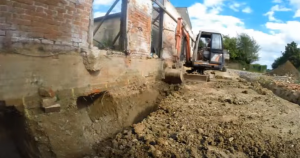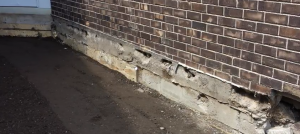Underpinning is a process of strengthening and stabilizing the foundation of an existing building. Ideally, foundations of buildings weakens after time when exposed to different conditions and hence the need arises to strengthen the foundations for safety and durability. Unlike restamping or reblocking where foundation stamps are completely replaced, in underpinning, the concrete slabs are reinforced with new material rather than being replaced.
This process is recommended because of a number of reasons. Among them are:
- There are signs of cracking, water seepage or sinking into the underlying soil of the existing building. Underpinning is therefore carried out to make the building stabilize
- Even after repeated repairs with mortar and insulation, the basement is still leaking due to internal heat. This makes house underpinning Melbourne the only fit solution since all other basic repairs have not been successful in making the foundation stronger
- If the building has additional floors, more weight is being added to the foundation and hence underpinning needs to be done to strengthen the basement. Some basements were not supposed to support stories, but when need arises, they are strengthened and can be able to comfortably support the weight
- It is recommended in areas where large buildings have been built in areas with soils which absorb a lot of water. These kinds of soils makes the basement weak and results to instability and hence the need to carry out the process
For an underpinning process to be successful, there are steps which are followed. These steps include:
Temporary support installation
This temporal support is created at the start of the process to provide support to the basement to avoid it collapsing during the process. The temporal installation also provides a base to move heavy materials e.g. piers during the process.
Excavation
This is the removal of soil from under and below the basement to provide access to the underside of the basement.  Excavating creates enough space to be able to install piers which add strength to the basement floor. However, it is important to have a professional to help you through the process. You should be knowing where to excavate and the right places to install piers sine unnecessary digging might result in the waste of time or weaken the basement in the long run.
Excavating creates enough space to be able to install piers which add strength to the basement floor. However, it is important to have a professional to help you through the process. You should be knowing where to excavate and the right places to install piers sine unnecessary digging might result in the waste of time or weaken the basement in the long run.
Pier piling
After excavation, extra support is then introduced to make the basement strong and stable. Some of the piers used include:
- a) Resistance piers – they are efficient in big homes. They are driven through the soil without any screws or brackets with the use of an advanced machinery
- b) Helical piers – these kind of piers cannot be manipulated easily because its framework has screws which cannot be removed easily. Helical piers are installed by a conventional system of screwing piers on a frame.
Pouring concrete
This is the final step in underpinning process. The temporal supports are removed and concrete poured upon the frame of the pier to make it durable and strong. Pouring of concrete is done using shovels, trowels and concrete rakes with a concrete cutter being used to smoothen the outer edge of the poured concrete.